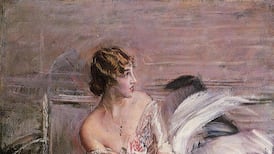Chances are that at some time in your life you have sung, or at least hummed along to, the ballad When Johnny Comes Marching Home.
But if you’re like me, you probably couldn’t remember the lyrics very well. And worse, you may have found yourself struggling to recall whether Johnny marched home in triumph (“Hurrah! Hurrah!”) or, on the contrary, limped back in defeat (“Hurroo! Hurroo!”), missing various parts of his anatomy.
The problem, of course, is that there are at least two different Johnnys, and two different songs. They’re usually sung to the same tune. And adding to the confusion, they both date from the same period, at least in printed form.
It's tempting to think that the anti-war version, Johnny I Hardly Knew Ye (first published in 1867) was a satire on the more gung-ho When Johnny Comes Marching Home (1863), which had been a hit during the American civil war.
But then again, as a traditional song, the former probably predated that decade, in some form or other. And insofar as it and the 1863 Johnny now usually share the same air, it's one they both borrowed from another 1860s ballad, involving a third Johnny – Johnny Pass the Bowl – which also mentioned the civil war, although it was more concerned with drinking than fighting.
Of the three, only Johnny I Hardly Knew Ye has an Irish setting. But to add to the muddle it was officially written by an Englishman, Joseph Geoghegan.
As you might guess from the surname, he had strong roots in this country: his father was a "fustian cutter" who had emigrated from Dublin. And the song is located in Kildare, "on the road to sweet Athy", where a forlorn woman laments the loss of her former lover, in instalments, during the wars of British India.
His deductions usually include an arm and a leg, at least, sometimes more. But if that Johnny was based on any unfortunate in particular, the rest of his identity is now lost to history.
This is in contrast with his “marching home” namesake, who we know to have been an Irish-born American, John O’Rourke.
The reason we know this is that the composer was Irish too, and O'Rourke's future brother-in-law, Patrick Sarsfield Gilmore.
Having borrowed a tune from the drinking song, Gilmore rewrote the lyric for his sister Annie as she prayed for her beloved’s safe return from the war. The result became a best-seller on both sides of the Atlantic. And the optimism of the lyrics was justified in that Johnny’s case at least, because he did indeed return in one piece, marrying Annie a few years later.
In Ireland, I suspect, the limbless Johnny is the more popular of the two, having received a leg up (as it were) from such 20th-century interpreters as the Clancy Brothers and the Dubliners.
But Gilmore's song has also had some influential coverers, including the Clash, who gave it the punk treatment in a 1978 rewrite, English Civil War.
Galway-born, Gilmore is nevertheless little remembered in Ireland now, or even in the US, to which he emigrated just after the Famine. He was an enormously successful band-leader in his time, however, playing at presidential inaugurations and attracting vast crowds to his concerts. Even his bands were big, with up to 100 members at a time.
What is now Madison Square Garden in New York was for a period known as Gilmore's Garden, having been leased by him for musical and other spectaculars. He also toured Europe to great acclaim. But back home, on one 1889 US tour, he performed to a million people. Then, having become the quintessential American bandmaster, he died in 1892 while preparing for a quintessentially American event: the 400th anniversary of Christopher Columbus's arrival.
He had never forgotten Ireland, by all accounts, being a major contributor to causes here throughout his life. But Ireland forgot him, eventually. At least until now. Gilmore's memory will be revived later this month when the RTÉ Concert Orchestra dusts off another of his marching pieces that, unlike the one about Johnny, hasn't been heard anywhere for well over a century.
President Grant's March commemorates a civil war general who, as the title notes, went on to occupy the White House. Its long-awaited refurbishment coincides with presidential events here, although that is entirely accidental. The new arrangement has instead been commissioned as part of an RTÉ radio documentary on Gilmore's life, produced by Tim Desmond, which will be aired on November 3rd.












